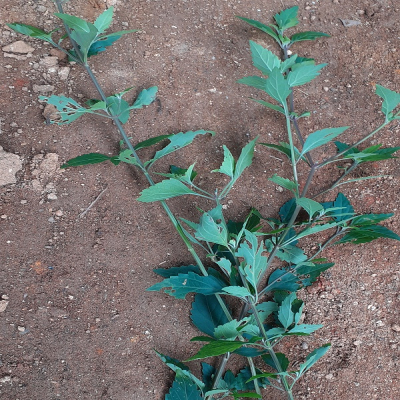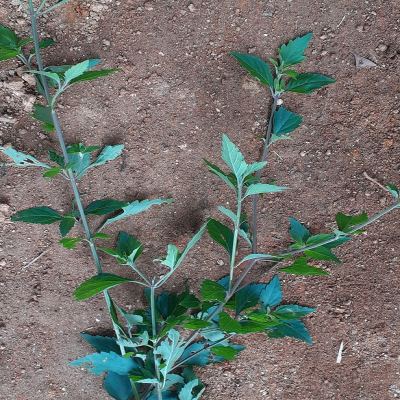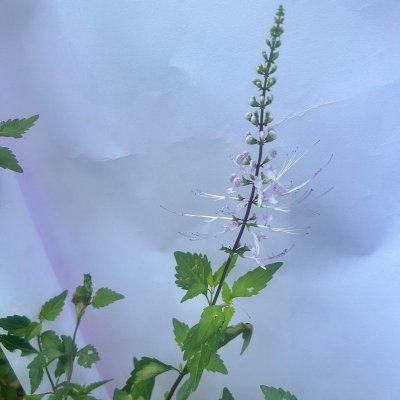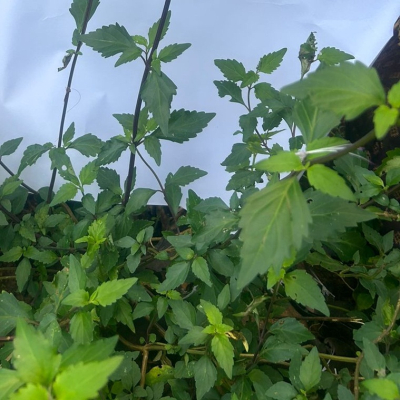Distribution and habitat: Throughout Assam, Burma, Nicobar Islands, Deccan, and Anamalais.
Botany: Under shrub, slender, glabrous or pubescent.
- Stems : 30-60 cm, 4 angled.
- Leaves: Distant pairs, 5-10 cm, narrowed into the petiole, ovate, acuminate, coarsely toothed, base cuneate.
- Flowers: Racemes. Calyx 4 mm, campanulate, 2 lower teeth subulate. Corolla 2.5 cm, glabrous, white or purplish. Corolla tube very slender, thrice as long as the calyx. Filaments far exerted, capillary, twice as long as the corolla. Nutlets broadly oblong, compressed, rugulose.
Chemical constituents: It contains lipophilic flavones, flavonol glycosides, and caffeic acid derivatives such as rosmarinic acid(major portion), 3′-hydroxy-5,6,7,4′-tetramethoxyflavone (TMF), sinensetin, salvigenin, scutellarein tetramethyl ether, eupatorine, camphor, menthone, d-terpineol, isomenthone, borneol, citronellol, carvone, geranyl acetone, linalool, bornyl acetate, limonene, 1,8-cineol, p-cymene, b-pinene camphene, a-pinene, norstaminolactone A, neoorthosiphonone, secoorthosiphol A–betulinic acid etc.
Properties and Uses: Antioxidant, hepatoprotective, antidiabetic and anti inflammatory. The leaves are made into tea and used in the treatment of diseases of kidneys and bladder (in Java)
Propagation: By stem cuttings (middle portion). 2 month old sprouted cuttings can be transplanted at spacing of 30cm x 30cm.






